What are and how to choose a complex fertilizer?
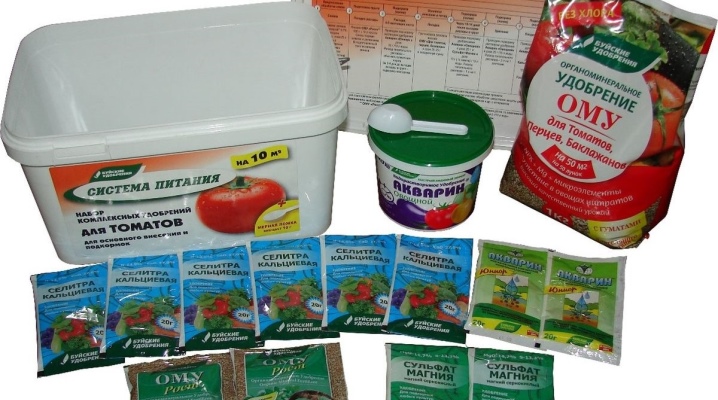
Complex fertilizers - what it is and how it is applied, why is it necessary in the garden: summer residents often turn to sellers of mineral complexes for plants with these questions. Indeed, it is not so easy to figure it out, because on sale you can find liquid products for tomatoes and dry granules for potatoes, cabbage and other crops. It is worth talking in more detail about what are and how to choose a complex fertilizer.

What it is?
Complex fertilizers are a type of top dressing used in the cultivation of horticultural, vegetable garden and other crops. They are based on minerals necessary for the normal growth and development of green shoots, roots, fruits. It is customary to call complex formulations created on the basis of two or more ingredients.

The selection and dosage of components is carried out based on the composition of the soil and climatic conditions in the region.
The introduction of complex fertilizers is carried out as part of pre-sowing soil preparation. It involves laying granular compositions into the soil, followed by digging it up. During the growing season it is customary to apply liquid complex fertilizers in which minerals are dissolved in water.

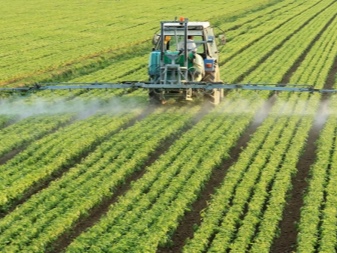
Advantages and disadvantages
Complex fertilizers have many advantages over conventional monocomponent fertilizers. They provide a comprehensive influence on the processes of growth and development. In addition, the pluses include the following:
- the minimum percentage of ballast components, due to which it is possible to significantly increase efficiency;
- highly concentrated formula - all nutrients are in a strictly verified concentration, so they provide a result regardless of the composition of the soil;
- long term of validity - usually 2 dressings per season are enough;
- an integrated approach - substances in 1 granule are contained in compatible forms, do not create negative reactions when mixing, dissolving;
- increased survival - allow to reduce the amount of watering, help to adapt plants to insufficiently favorable climatic conditions;
- versatility - can be used even when growing crops that are especially sensitive to changes in soil osmotic pressure;
- simplicity of application, storage and environmental safety - complex fertilizers do not harm people and animals, break down into safe compounds.
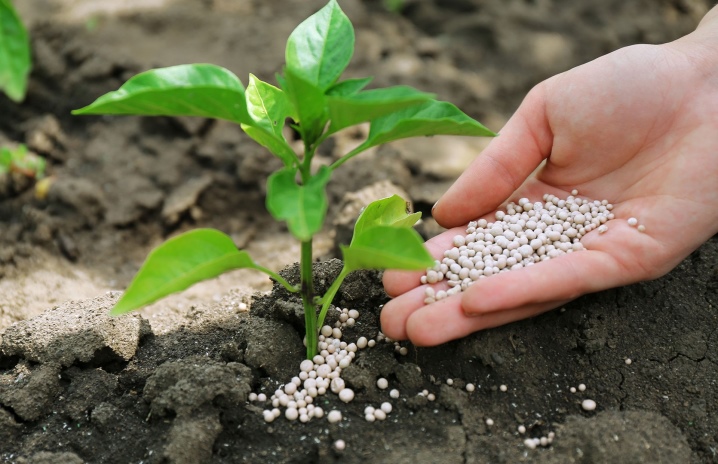
There are also disadvantages. The main disadvantage is considered to be a lack of a wide variety of compositions. There are not so many complex fertilizers, most have a similar composition, differ only in dosage and number of components.
Accordingly, for crops that require an individual approach, you will have to select additional nutrition that meets their needs.
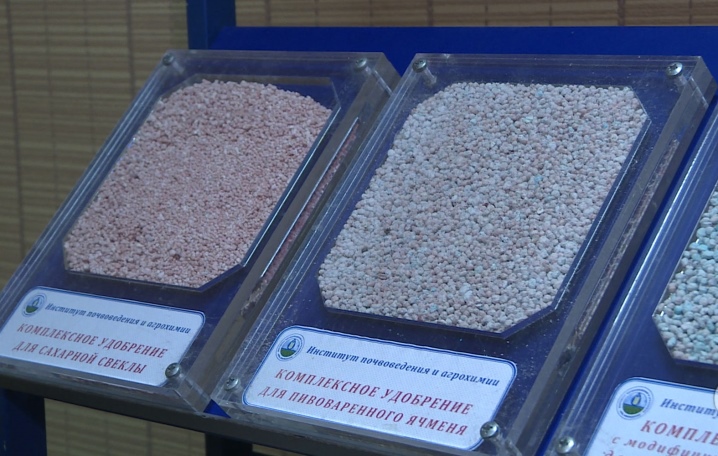
Views
All complex fertilizers can be divided into categories according to their state of aggregation, the number of ingredients in the composition and the method of production. Liquid forms not so common, but most commercially available options contain water-soluble granules. And also there is an unspoken division by seasons of application - it happens autumn and spring, as well as universal, usable all year round. Micronutrient formulations provide additional valuable nutrients.
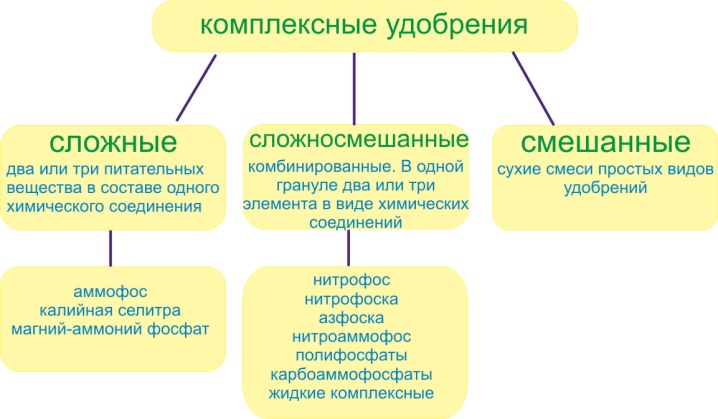
Let's consider a more detailed classification.
Eco-friendly

Natural preparations "Orton" have been on the market since 1993 and have long won the trust of Russians. Regulators of growth and fruit-formation of plants from "Orton" do not contain "harsh chemistry". They are created on the basis of natural ingredients and are safe for humans, animals, pollinating insects (bees, bumblebees).
In most of Russia, light and heat are often not enough to grow a bountiful harvest of heat-loving crops. In difficult climatic conditions in tomatoes, eggplants, peppers, there is a deficiency of growth substances. Natural stimulants "Orton" make up for this deficit and allow you to get a harvest 1.5 times more than usual. With the help of these preparations, it is possible to improve the quality of the fruit. By the way, the effectiveness of Orton funds was confirmed back in the 90s in the well-known program “Our Garden”.
Mixed
Mixed - the simplest of the complex fertilizers. They are obtained by simply combining mineral components. They can be presented as powdery agents and granules. The connection is carried out mechanically at the factory or directly at the agricultural enterprise. This type is available for self-preparation.
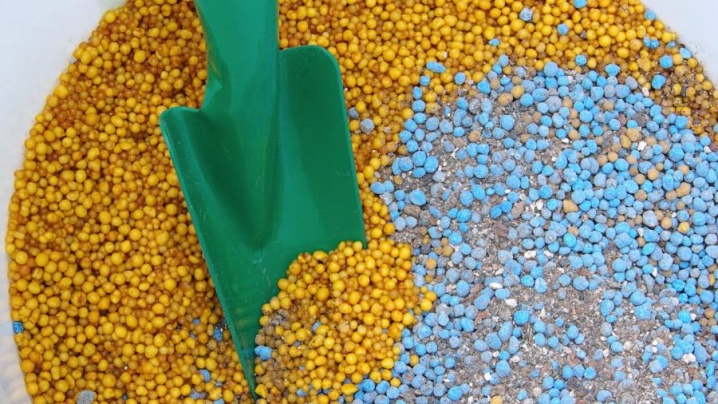
Complex
Complex fertilizers consisting of several ingredients combined by a chemical reaction are called complex fertilizers. In this case, the granular and liquid forms of the substance contain 2-3 main components that determine the effectiveness and appropriateness of using the composition for specific crops.
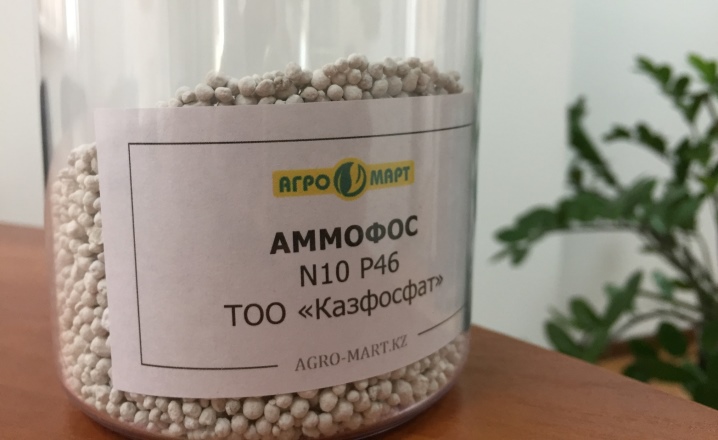
Liquid
Such forms of complex fertilizers are made in the form of ready-made solutions or concentrated suspensions requiring additional dilution with water. When creating them, combinations are used in different types of trace elements, ammonium nitrate, phosphoric acid, superphosphate and its acids, anhydrous ammonia, potassium chloride and other ingredients. Ready-made formulations are sold under different trade marks, in fact, having the same composition.
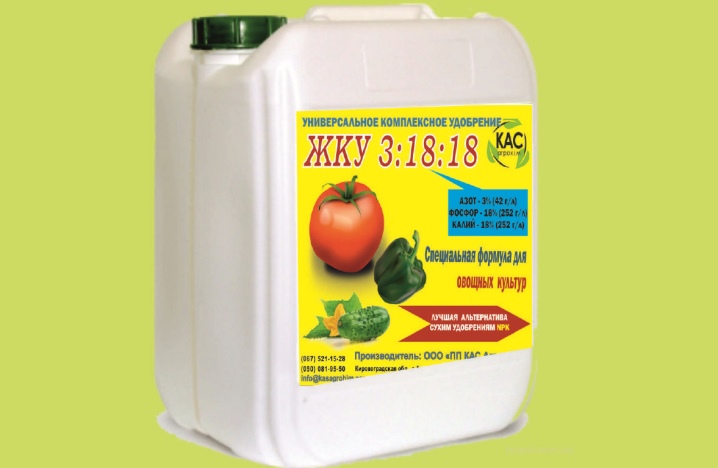
Natural
This group includes complex fertilizers obtained naturally. These properties are possessed by compost, formed with the help of complex biological processes of decay of organic matter. Wood ash also accumulates the maximum concentrate of valuable substances. In total, it contains more than 70 components, but phosphorus, potassium, iron, calcium, silicon are of the greatest interest for agriculture. A significant disadvantage of natural fertilizers is the absence of nitrogen in their composition. Even using natural dressings, it will not be possible to completely exclude ready-made industrial formulations from use.
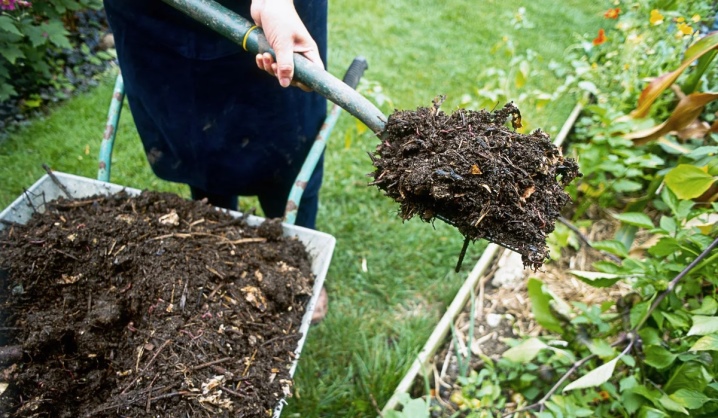
Multifunctional
The most popular and "young" complex fertilizers on the market. Macronutrients in their composition - nitrogen, phosphorus, potassium, supplemented with trace elements and biologically active substances. Top dressing of this type is devoid of the main disadvantage of all complex formulations. They are produced taking into account the needs of a particular culture.
Accordingly, such a composition will be beneficial only if the “addressee” for their use is correctly chosen.
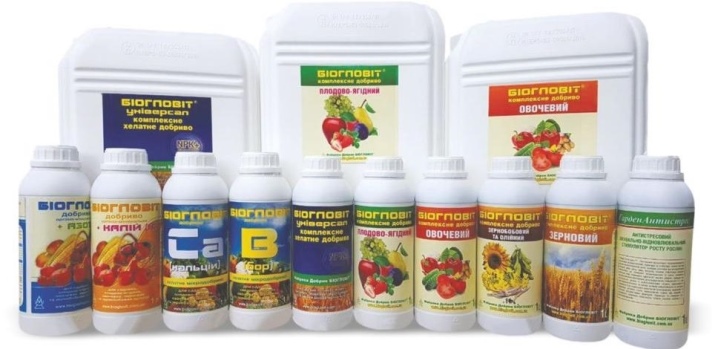
Two-component
The complex two-component fertilizers contain 2 main ingredients. They are well compatible with organic fertilizing and can be used as an independent source of nutrients. Among the most famous mixtures of this type, several can be distinguished.
- Ammophos. A product based on nitrogen and phosphorus in the amount of 12 and 52%, respectively. The rest of the composition is occupied by fillers.
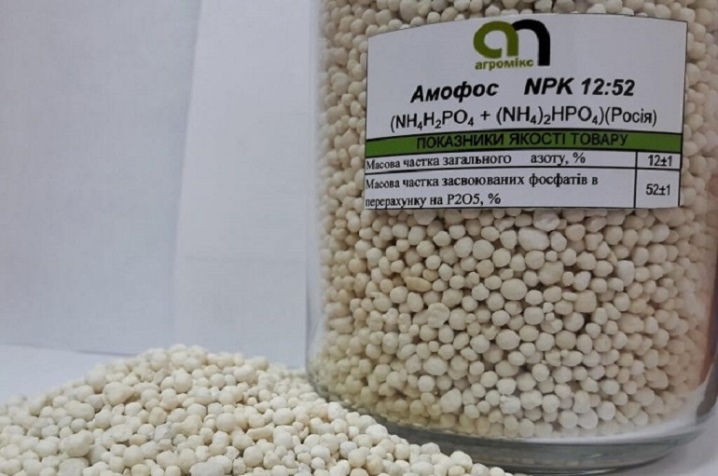
- Ammophosphate. Basic fertilizer with 6% nitrogen and 46% phosphorus. It is considered to be quite balanced and is actively used as the main source of minerals in agriculture and horticulture.
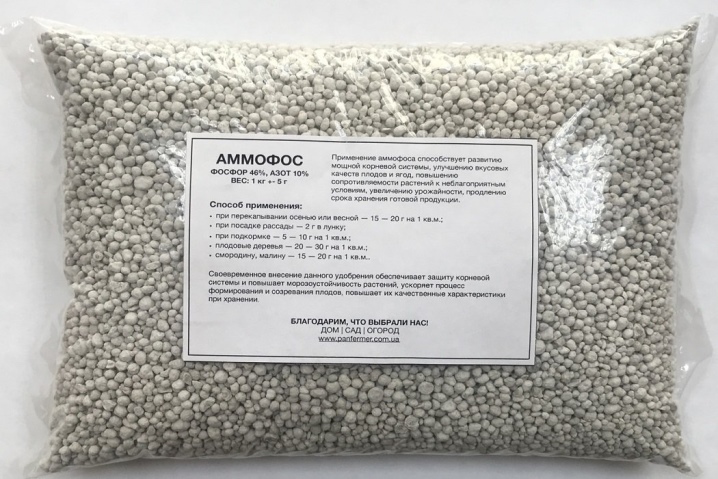
- Nitophosphate... This tool differs from others in the form of the nitrogen component - ammonium or nitrate.Phosphorus is presented here in the form of a water-soluble compound, which greatly facilitates its absorption by plants. It is a versatile two-component complex for all types of soil and crops.
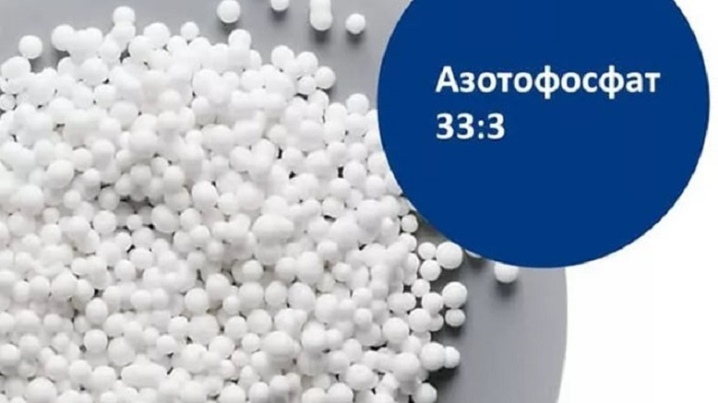
Three-component
The most complex in composition, but at the same time easily digestible for plants are three-component complex fertilizers. They most fully cover the needs of agricultural or horticultural crops in nutrients. Potassium is added to nitrogen and phosphorus, as evidenced by the ending "ka" in the name of the compositions. Several of the most popular are worth highlighting.
- Diammofosk. The most highly concentrated of the three-component formulations. It is distinguished by its versatility, it is suitable for application in liquid solutions and granules, as part of pre-sowing preparation it can be dug up together with the cultivated area. In addition to the main ingredients, the composition contains up to 7% of trace elements - iron, calcium and others.
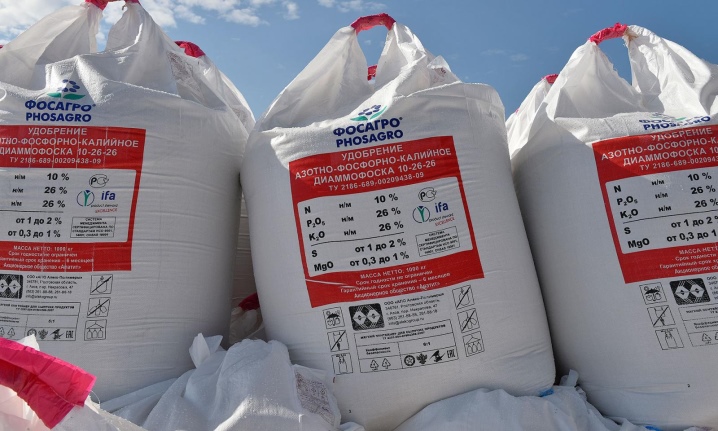
- Nitrofoska. Potassium, nitrogen and phosphorus are mixed here in equal proportions, which makes the mixture optimal for pre-planting. For growing and developing plants, this concentration is not always suitable.
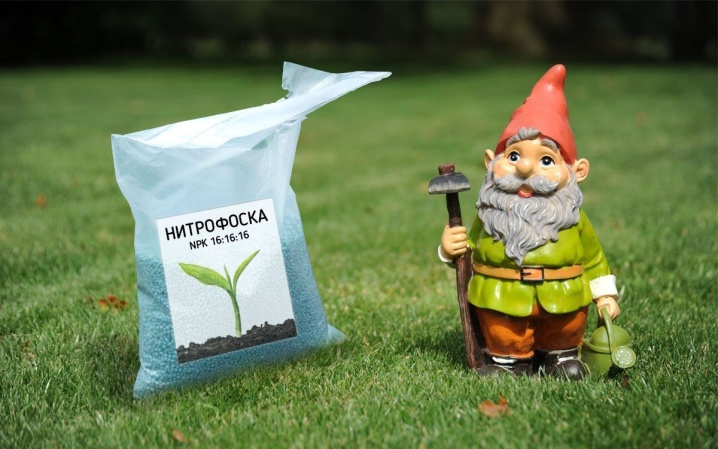
- Nitroammofosk. The percentage of the main ingredients is not uniform here, nitrogen takes up a smaller proportion, phosphorus and potassium are contained in almost equal amounts. This type of three-component fertilizer is one of the easiest to dispense when caring for various crops.
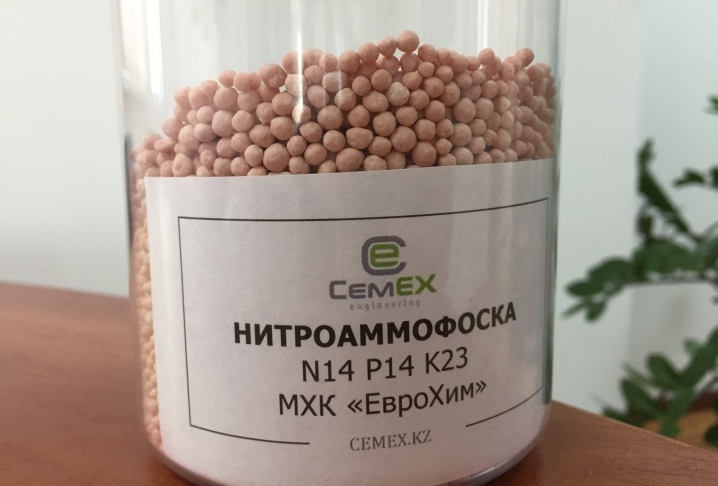
Production
Obtaining complex fertilizers is carried out by mixing 2 or 3 basic components - nitrogen, potassium, phosphorus. Manufacturers create a finished product using different techniques and technologies. Simple mixed formulations obtained by grinding and combining individual minerals. At the plant, they are created by machine; in the fields, fertilizer installations are used for the same purposes.
In the manufacture of multicomponent formulations - the so-called complex fertilizers, pesticides and herbicides, valuable biologically active substances necessary for a particular culture, can be added to the main ingredients.
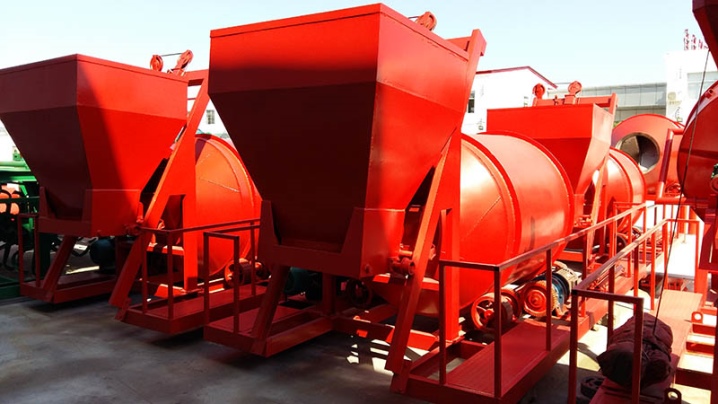
According to the production method, several types are distinguished.
- Compound complex fertilizers. They are created in the course of a general technological process. 1 pellet contains 2 or 3 nutrients. The processing of the original ingredients is carried out by physical and chemical methods.
- Fertilizer mixtures. For their production, simple monocomponent fertilizers are used, which are combined in a common installation. Mixing takes place mechanically. Among themselves, ammonium nitrate or sulfate, carbamide, superphosphate, phosphorite flour, potassium in sulfate form are most often mixed.
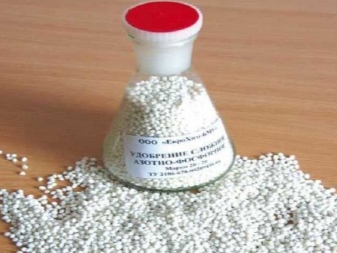
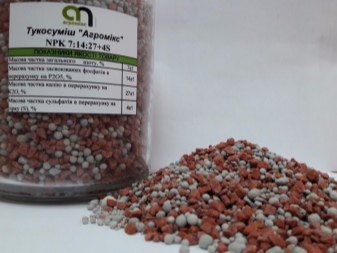
Selection Tips
When choosing complex fertilizers, the first thing you should pay attention to is their purpose, namely:
- for lawn you can use diammofoska in granules, embedding it together with the seeds before winter; a similar technology is used for sowing winter cereals;
- for the city - when growing flower beds or for indoor flowers, it is worth purchasing a liquid two-component or three-component fertilizer; for citrus crops, one-component nitrogen-rich urea is used in spring, and superphosphate in August and September;
- for garden it is worth using ready-made granular formulations; in the case of perennials, they are used as part of loosening and mulching the soil in the root area; for annual crops, they are introduced into the pit during planting;
- for tomatoes the optimal choice is two-component and three-component compositions - ammophos, diammophoska, nitrophoska;
- for sunflower it is worth giving preference to dressings with a high concentration of nitrogen;
- for potatoes today they mainly use special formulations: "Potato-5", "Bona Forte", as well as the usual nitrophosphate.
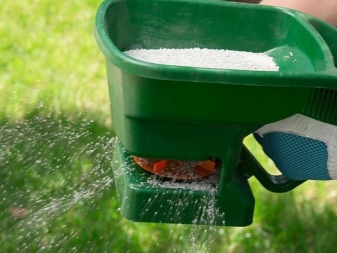
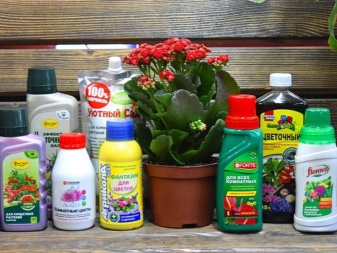

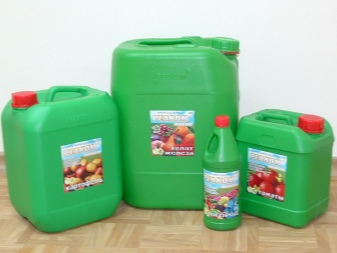
Application rules
When feeding plants in a greenhouse or in a vegetable garden, it is extremely it is important to consider not only the individual needs of the plant, but also the type of soil. For example, in heavy soils with low permeability of substances, complex fertilizers must be applied in the fall. In the case of light soils, it is better to lay mineral dressings in the spring to prevent accidental washout by groundwater.

The method of application also matters.
- Liquid solutions intended for root watering. They are used during the growing season, after heavy rain. This allows you to protect the roots of the plant by reducing the concentration of substances.
It is necessary to exclude the contact of the solution on the leaves - they can "burn out".
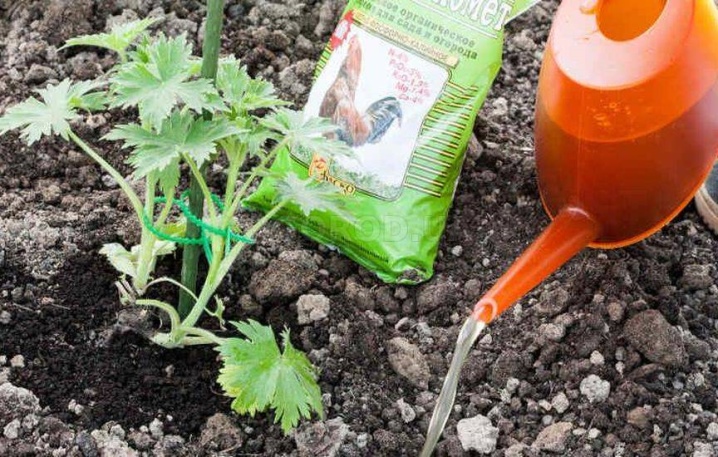
- Granular complex fertilizers make when digging or loosening the soil. In the spring, before the snow melts, fertilizer is scattered in a certain concentration (depending on the culture) right on top of the snowdrifts. The rest of the time, it is better to choose evening hours and dry periods without bright sun for feeding.
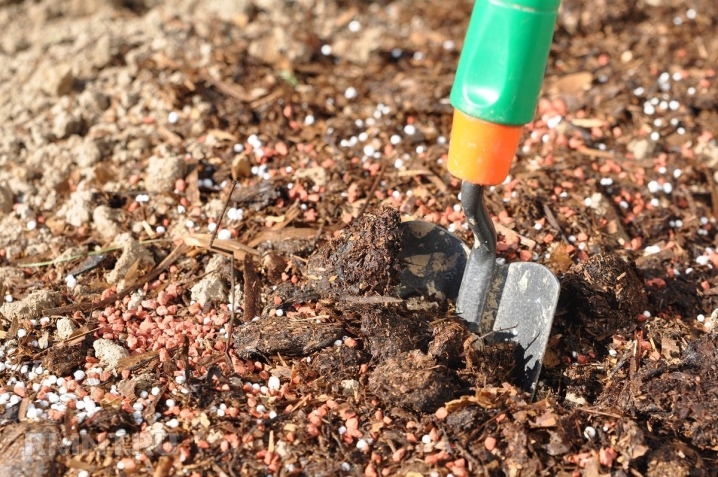
Following these recommendations, you can easily use complex fertilizers to improve the condition of the soil in the garden, vegetable garden, and other agricultural facilities.
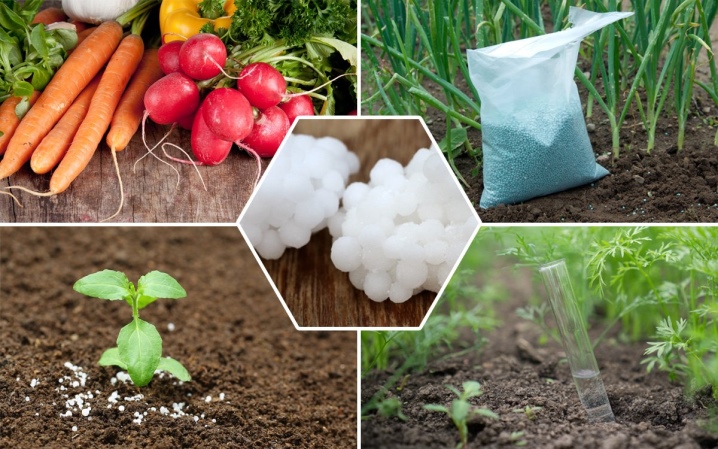
You can find out even more useful information about complex fertilizers in the next video.













The comment was sent successfully.